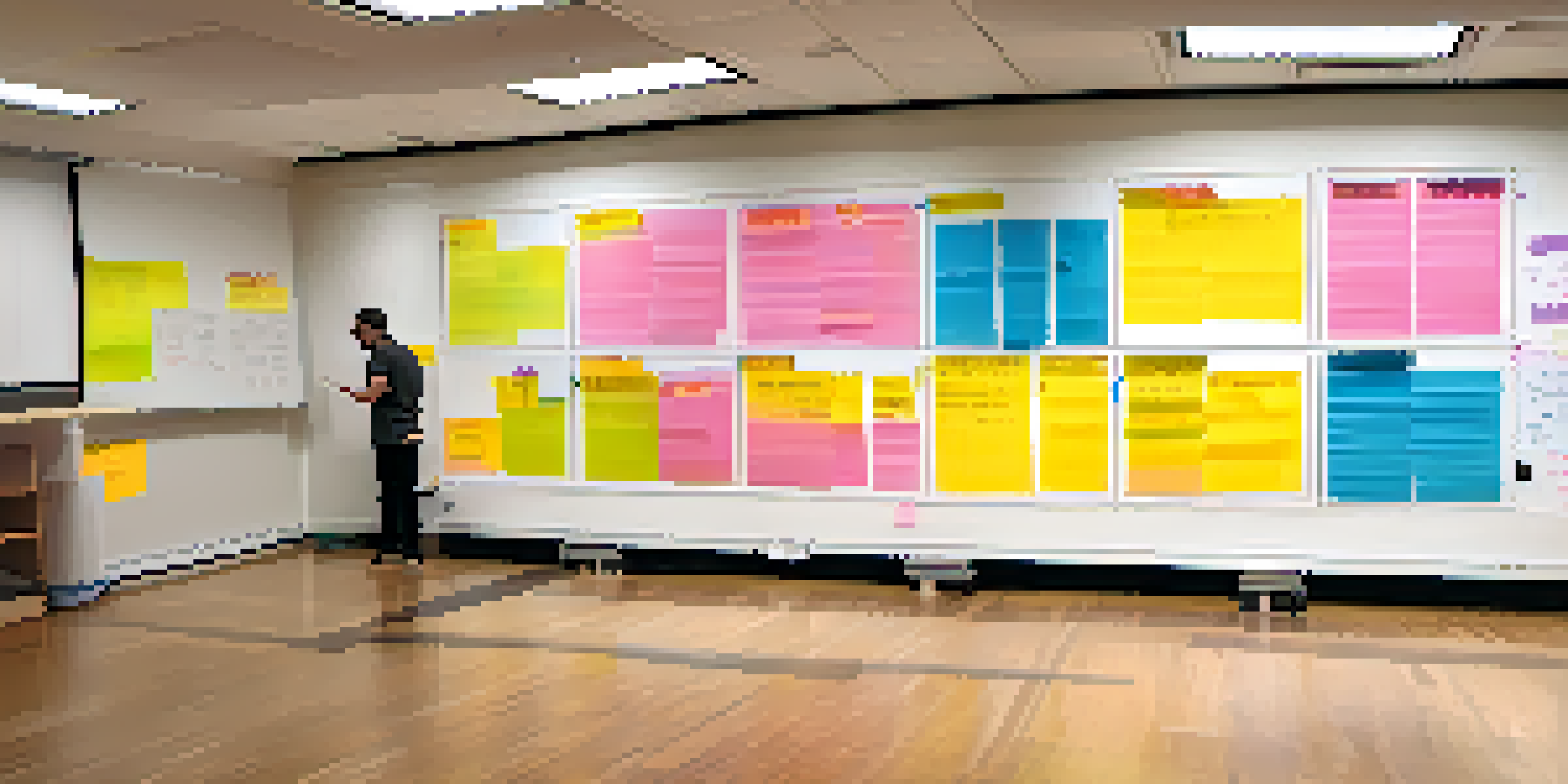Creating a Rehearsal Schedule: Best Practices for Performers

Understand the Purpose of a Rehearsal Schedule
A rehearsal schedule serves as the backbone of any performance planning. It outlines when and where each rehearsal will take place, ensuring everyone knows what to expect. Think of it as a roadmap for your journey towards a successful show, guiding you along the way.
The secret of success is to be ready when your opportunity comes.
By clearly defining rehearsal times, you minimize confusion and help keep everyone on the same page. This consistency fosters a sense of commitment among the cast and crew, as each member can prioritize their time effectively. A well-structured schedule can also alleviate the stress that often accompanies performance preparation.
Ultimately, the goal of a rehearsal schedule is to enhance the quality of the performance. When everyone is aligned and aware of their roles, it leads to better teamwork and, ultimately, a more polished show. So, let's dive deeper into how to create a rehearsal schedule that works for everyone involved.
Assess Availability of All Participants
Before crafting your rehearsal schedule, it’s crucial to know when everyone is available. This involves communicating with all performers, stagehands, and directors to gather their schedules. A simple survey or group chat can be a great way to collect this information efficiently.

Understanding everyone’s availability not only helps in scheduling but also shows respect for each individual's time. Just like in a team sport, knowing when your teammates can practice ensures that everyone can contribute to the success of the performance. It avoids conflicts and allows for maximum participation.
Importance of a Rehearsal Schedule
A rehearsal schedule acts as a roadmap for the performance, ensuring everyone is aligned and reducing confusion.
Once you have this data, you can identify the best times to hold rehearsals that accommodate the majority. This collaborative approach helps create a schedule that feels inclusive, fostering a positive environment where everyone feels valued and invested in the project.
Set Clear Goals for Each Rehearsal
Every rehearsal should have specific objectives to ensure productive use of time. Whether it’s working on character development, blocking scenes, or fine-tuning vocals, clear goals help keep everyone focused. Think of it as setting a destination for a road trip; without a clear direction, you risk getting lost.
Success is the sum of small efforts, repeated day in and day out.
By defining what you want to achieve in each session, you can tailor the rehearsal to meet those needs. It also allows performers to come prepared, knowing what to practice beforehand. This leads to more efficient rehearsals and encourages active participation from everyone involved.
Setting goals also provides a sense of accomplishment as you progress through the schedule. Each rehearsal becomes a stepping stone towards the final performance, reinforcing the idea that every practice counts and contributes to the overall success.
Incorporate Flexibility into the Schedule
While having a structured rehearsal schedule is essential, it's equally important to allow for flexibility. Life happens, and unexpected conflicts can arise, so being adaptable helps everyone stay engaged and less stressed. Think of your schedule like a rubber band; it should stretch but not break.
Building in buffer times can help accommodate last-minute changes or overrun rehearsals. This could mean leaving an extra 15-30 minutes between sessions or scheduling make-up rehearsals for missed dates. When participants know they have a little wiggle room, they are more likely to attend and give their best effort.
Flexibility is Key to Engagement
Incorporating flexibility into the schedule allows for adaptability, helping participants stay engaged and reducing stress.
Flexibility also fosters a more relaxed atmosphere, encouraging performers to take risks and explore their characters without the pressure of a rigid timeline. By creating a balance between structure and adaptability, you set the stage for a successful rehearsal process.
Utilize Digital Tools for Scheduling
In today's digital age, leveraging technology can simplify the scheduling process immensely. Tools like Google Calendar, Doodle, or scheduling apps allow for easy sharing and updating of rehearsal times. Think of these platforms as your digital assistant, helping keep everything organized and accessible.
Using digital tools means that everyone involved can receive immediate updates and changes to the schedule. This minimizes miscommunications and ensures that all participants are informed about any adjustments. Plus, many of these tools send reminders, which can be a lifesaver for busy performers.
Moreover, digital platforms often allow for collaborative features, enabling team members to suggest times or provide feedback. This kind of engagement not only streamlines the scheduling process but also fosters a sense of ownership and teamwork among all participants.
Communicate the Schedule Effectively
Once you’ve created your rehearsal schedule, communicating it effectively to all participants is crucial. This means not only sharing the schedule but also ensuring that everyone understands the expectations. Clear communication can prevent confusion and helps everyone feel prepared for each rehearsal.
Consider using multiple channels to share the schedule, such as email, group chats, or even printed copies. This multi-faceted approach caters to different preferences and ensures that no one misses out on important information. Just like in a game, everyone needs to know the playbook to perform their best.
Effective Communication is Crucial
Communicating the rehearsal schedule clearly ensures that all participants understand expectations and stay informed.
Encourage questions and feedback about the schedule, creating an open dialogue that promotes understanding. This transparency builds trust and reinforces the idea that everyone’s input is valued, making for a more cohesive and motivated team.
Evaluate and Adjust the Schedule as Needed
After a few rehearsals, take the time to evaluate how well the schedule is working. Are rehearsals running smoothly? Are goals being met? Gathering feedback from participants can provide valuable insights into what’s working and what might need adjustment.
Just like a performance, the rehearsal process is dynamic and may require changes along the way. If certain times are consistently problematic, consider altering them or finding alternative solutions. This proactive approach ensures that the schedule continues to serve its purpose effectively.

Regularly assessing the rehearsal schedule not only improves efficiency but also demonstrates that you’re committed to the team's success. By being open to change, you foster a culture of continuous improvement that benefits everyone involved in the performance.